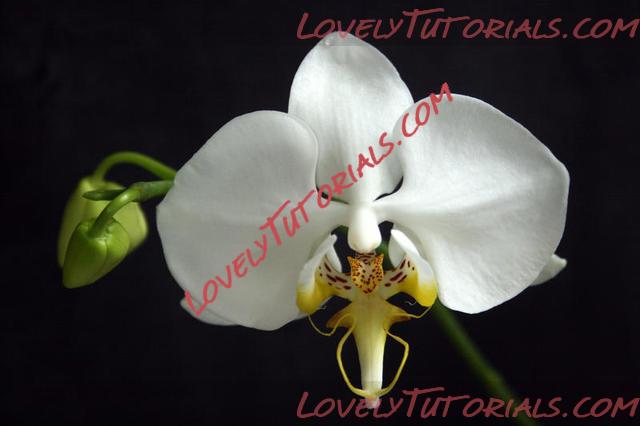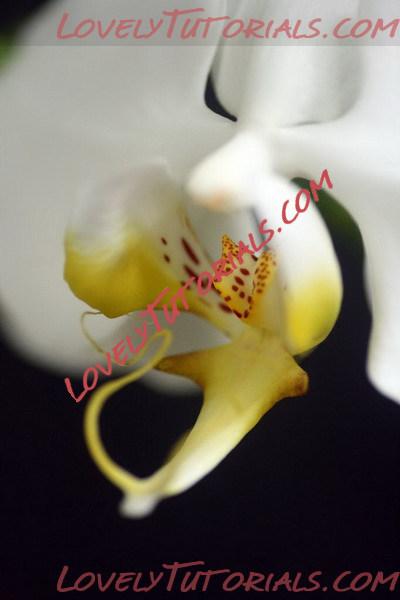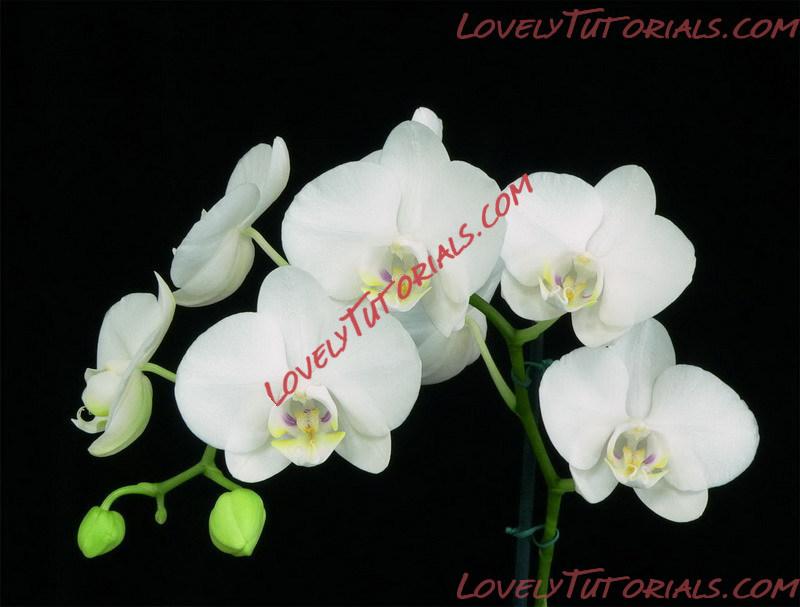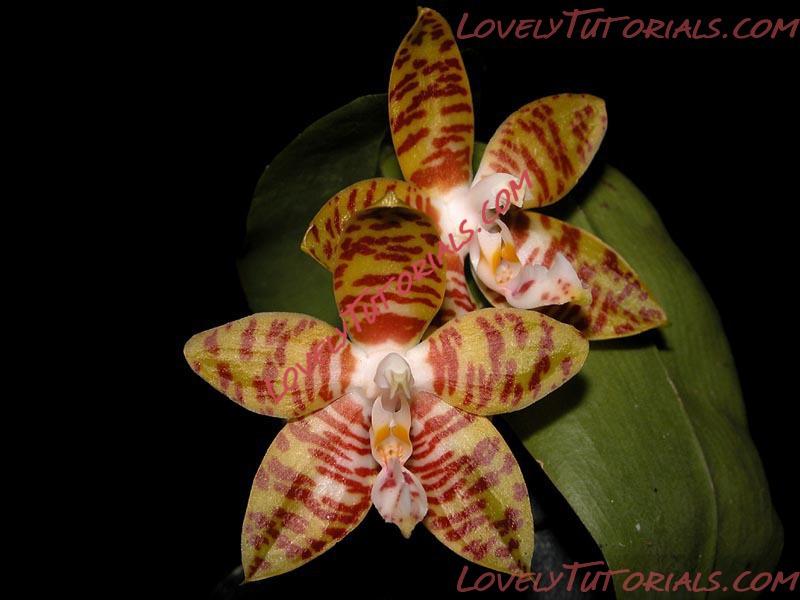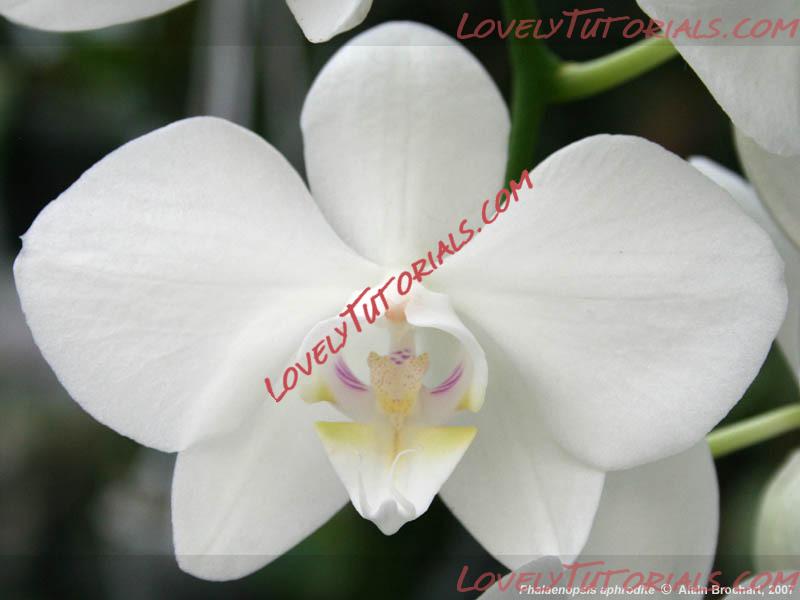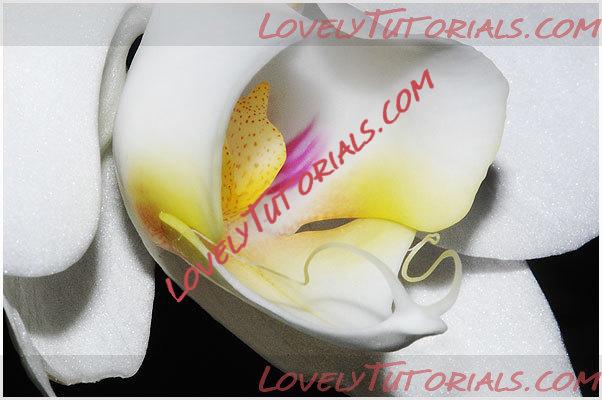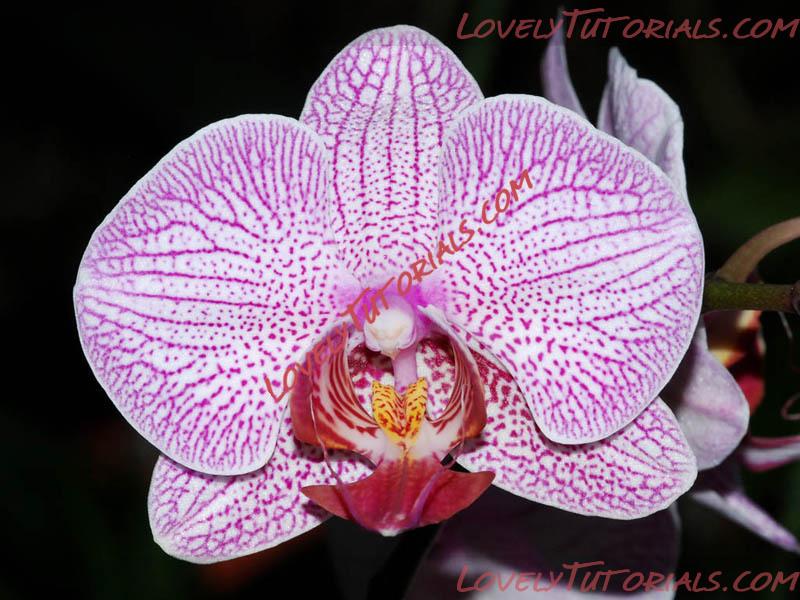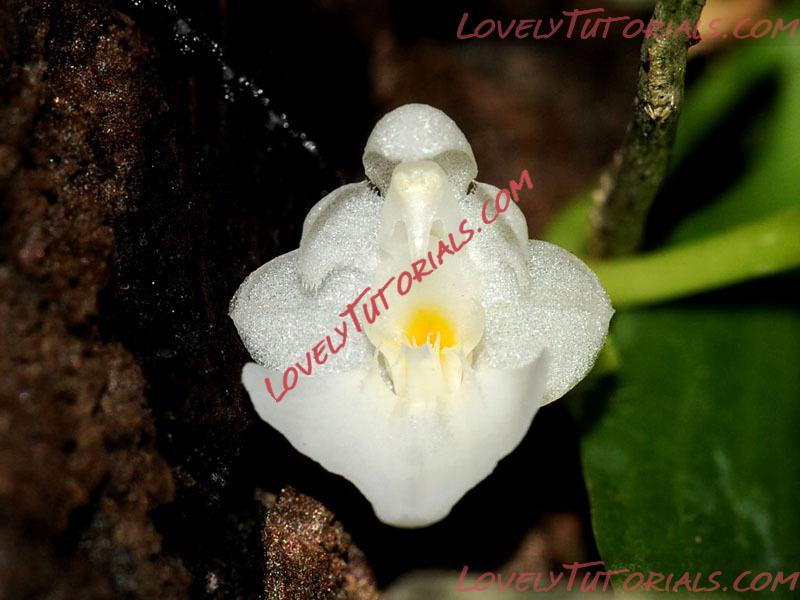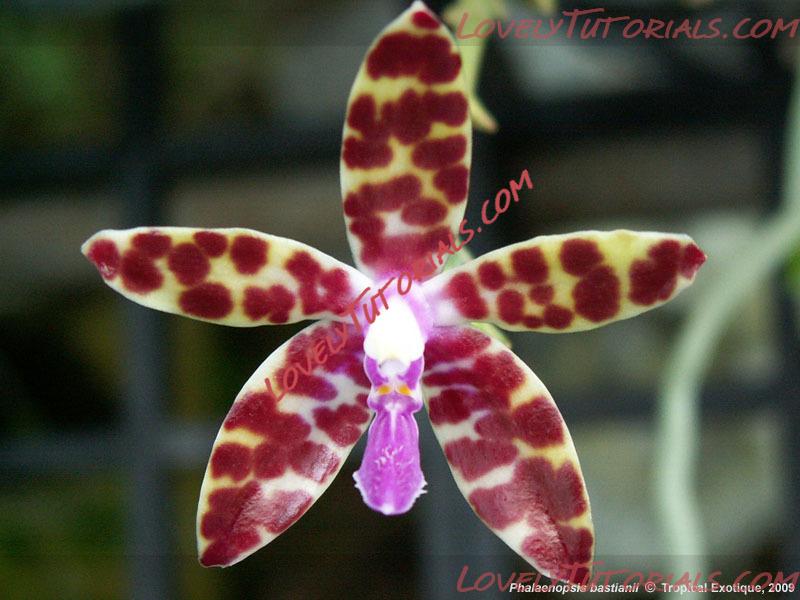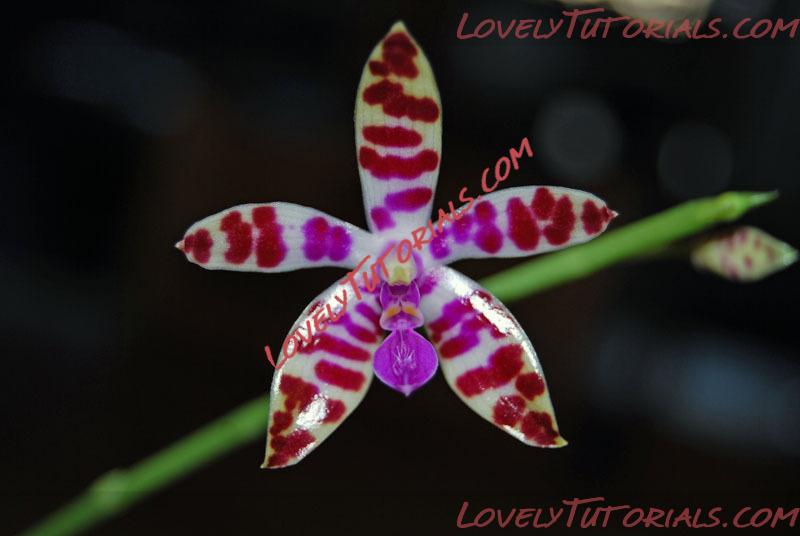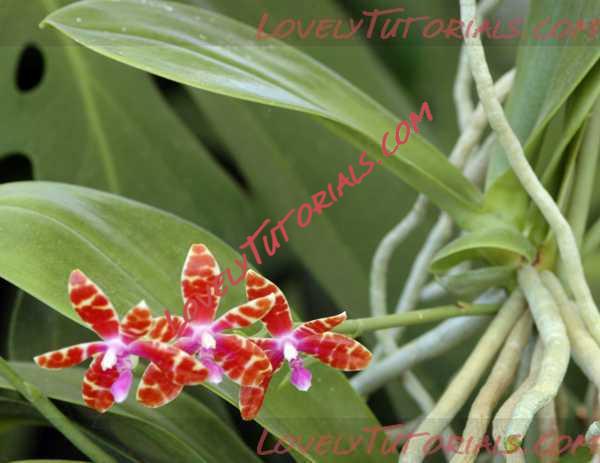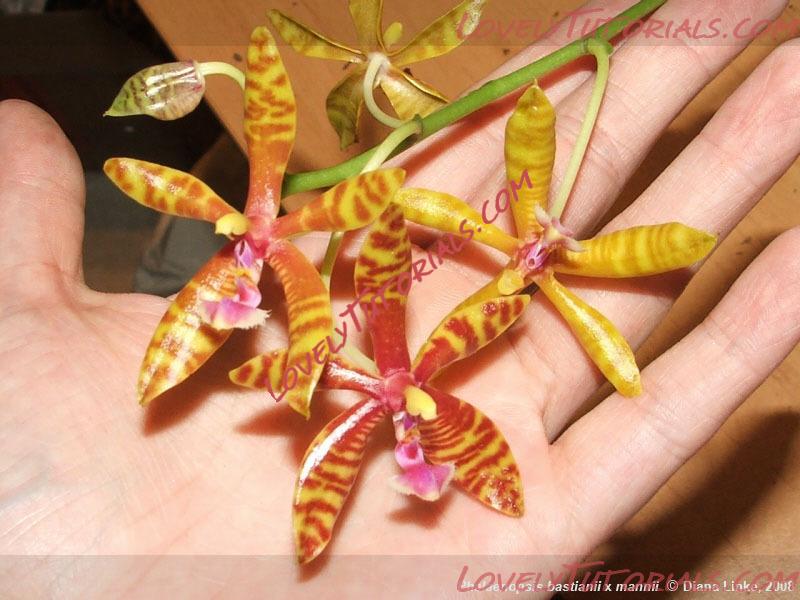Фаленопсис (лат.
Phalaenopsis) — род эпифитных (иногда литофитных) травянистых растений семейства Орхидные из Юго-Восточной Азии, Филиппин и северо-востока Австралии. В природных условиях обитают во влажных равнинных и горных лесах.
Аббревиатура родового названия —
Phal.
Многие представители рода и гибриды с их участием популярны в комнатном и оранжерейном цветоводстве, а также широко представлены в ботанических садах.
Биологическое описание
Это обширный род из трибы Вандовых, насчитывает около 40 видов. Представители рода — моноподиальные растения с сильно укороченным стеблем и широкими кожистыми листьями. Рост растения происходит только в одном направлении — вверх. Из пазух между листьями растение выпускает воздушные корни и цветоносы. У взрослого растения, как правило 4—6 листьев.
Листья вечнозелёные, длиной 5—30 см. У некоторых видов на листьях красивый мраморный рисунок.
Цветоносы пазушные, длинные, часто ветвящиеся, у многих видов с большим количеством довольно крупных цветков. Цветок напоминает по форме бабочку.
Корни воздушные с толстым слоем веламена, иногда уплощенные, у некоторых видов зеленоватые за счет присутствия в них хлорофилла.
Виды имеющие ароматные цветки:
Phalaenopsis amabilis,
Phalaenopsis bellina (наиболее сильный и приятный аромат по сравнению с другими видами рода),
Phalaenopsis corningiana,
Phalaenopsis gigantea (слабый, сладковатый аромат),
Phalaenopsis lueddemanniana (сильный, приятный аромат),
Phalaenopsis mannii,
Phalaenopsis mariae (слабый аромат),
Phalaenopsis modesta (сильный, приятный аромат),
Phalaenopsis pulchra,
Phalaenopsis reichenbachiana (затхлый запах),
Phalaenopsis schilleriana (аромат появляется в последние недели цветения),
Phalaenopsis speciosa,
Phalaenopsis stuartiana (слабый аромат),
Phalaenopsis sumatrana,
Phalaenopsis tetraspsis (сильный аромат),
Phalaenopsis venosa (неприятный запах),
Phalaenopsis violacea,
Phalaenopsis wilsonii.
В комнатных условиях фаленопсисы выращивают либо в пластиковых горшках (часто прозрачных), либо методом блок-культуры. Прозрачные пластиковые горшки используются для контроля влажности субстрата и состояния корневой системы.
Большую часть видовых и гибридных фаленопсисов можно содержать при относительной влажности воздуха 40—50%, по другим данным 60—70%. Для локального увеличения влажности горшок ставят на поддон с мокрым керамзитом. Также полезно опрыскивание воздуха вокруг листьев. Следует следить, чтобы вода не попадала в пазухи листьев: это может вызвать загнивание.
Большинство видов и гибридов относятся к тёплой температурной группе. Зимой и летом для них благоприятна температура 22—25 °C, ночью — не ниже 21 °C. Для успешного цветения желателен перепад между дневными и ночными температурами в 5—10°С.
Большинство фаленопсисов — растения без чётко выраженного периода покоя, поэтому в течение всего года полив должен быть умеренный, но регулярный. Субстрат должен быть всегда влажный, но не мокрый. Для полива используется вода (желательно мягкая или прошедшая очистку методом обратного осмоса) комнатной температуры.
Почти все фаленопсисы — эпифитные растения, в природных условиях они растут на стволах и ветвях деревьев. Влагой, минеральными и органическими веществами их обеспечивают многочисленные фотосинтезирующие воздушные корни, которыми они крепятся к коре деревьев и растительным остаткам скапливающимся в развилках ветвей. Поэтому в комнатной и оранжерейной культуре корням этих растений нужна циркуляция воздуха.
В качестве дренажа, на дно горшка можно насыпать керамзит или кусочки пенопласта. Субстрат для посадки готовят из смеси крупных кусочков коры сосны, сфагнума, перлита или керамзита и древесного угля в соотношении 3:1:1:1.
Подкормки специальным удобрением для орхидей или комплексным минеральным удобрением производятся 1 раз в одну—две недели.
Пересадку осуществляют один раз в год после цветения.
Существует успешный опыт реанимации фаленопсисов потерявших корни в воде.
Phalaenopsis abbreviated Phal in the horticultural trade, is an orchid genus of approximately 60 species. Phalaenopsis is one of the most popular orchids in the trade, through the development of many artificial hybrids.
The generic name means "Phalaen[a]-like" and is probably a reference to the genus
Phalaena, the name given by Carolus Linnaeus to a group of large moths; the flowers of some species supposedly resemble moths in flight. For this reason, the species are sometimes called
Moth orchids.
They are native throughout southeast Asia from the Himalayan mountains to the islands of Polillo, Palawan and Zamboanga del Norte in the island of Mindanao in the Philippines and northern Australia. Orchid Island of Taiwan is named after this genus. Little recent information about their habitat and their ecology in nature is available since little field research has been done in the last decades.
Most are epiphytic shade plants; a few are lithophytes[
citation needed]. In the wild, some species grow below the canopies of moist and humid lowland forests, protected against direct sunlight; others grow in seasonally dry or cool environments. The species have adapted individually to these three habitats.
Possessing neither pseudobulbs nor rhizome,
Phalaenopsis shows a monopodial growth habit: a single growing stem produces one or two alternate, thick, fleshy, elliptical leaves a year from the top while the older, basal leaves drop off at the same rate. If very healthy, a
Phalaenopsis plant can have up to ten or more leaves. The inflorescence, either a raceme or panicle, appears from the stem between the leaves. They bloom in their full glory for several weeks. If kept in the home, the flowers may last two to three months.
Some
Phalaenopsis species in Malaysia are known to use subtle weather cues to coordinate mass flowering.
Classification
The genus can be classified into two groups :
- A group of species with a long, branched inflorescence (up to 1 m long) and large, almost round flowers with rose or white tints.
- A group of species with short stems and less rounded, waxy flowers with more pronounced colors.
In terms of Raunkiær plant lifeform terminology, these plants are epiphytes.
Based on DNA evidence, the genera
Doritis Lindl. and
Kingidium P.F.Hunt are now included in
Phalaenopsis, according to the World Checklist of Selected Plant Families.However not every specialist in this field accepts these taxonomic changes.
Intensive cross-fertilization has produced a great number of hybrids in all colors and variations. These are usually more adaptable to artificial conditions than their botanical ancestors. Many are hybrids of
Phalaenopsis amabilis,
Phalaenopsis schilleriana or
Phalaenopsis stuartiana.
Growing Phalaenopsis
Phalaenopsis are among the most popular orchids sold as potted plants owing to the ease of propagation and flowering under artificial conditions. They were among the first tropical orchids in Victorian collections. Since the advent of the tetraploid hybrid
Phalaenopsis Doris, they have become extremely easy to grow and flower in the home, as long as some care is taken to provide them with conditions that approximate their native habitats. Their production has become a commercial industry.
In nature, they are typically fond of warm temperatures (20 to 35 °C), but are adaptable to conditions more comfortable for human habitation in temperate zones (15 to 30 °C); at temperatures below 18 °C (64 °F) overwatering causes root rot.
Phalaenopsis requires high humidity (60-70%) and low light of 12,000 to 20,000 lux.
The flower spikes appear from the pockets near the base of each leaf. The first sign is a light green "mitten-like" object that protrudes from the leaf tissue. In about three months, the spike elongates until it begins to swell fat buds which will bloom.
It was previously believed that flowering is triggered by a night-time drop in temperature of around 5 to 6 degrees over 2 to 4 consecutive weeks, usually in the fall, and a day-time drop in temperature to below 29 °C (84 °F). Using two
Phalaenopsis clones, Matthew G. Blanchard and Erik S. Runkle (2006) established that, other culture conditions being optimal, flower initiation is controlled by daytime temperatures declining below 27 °C (81 °F), with a definite inhibition of flowering at temperatures exceeding 29 °C (84 °F). The long-held belief that reduced evening temperatures control flower initiation in
Phalaenopsis is shown to be false. Rather, daytime temperatures influence flowering while night time temperatures do not appear to have any effect.


